Welcome to the 2020 Physalis Community Science Project
Growing Tips
Germination
- Try and start seeds in a warmer part of your home
- Colombia (Physalis peruviana) takes the longest to germinate. In a room temperature environment we’ve observed 16+ days until germination. In the greenhouse it usually takes a little less than two weeks as the seeds germinate faster in a warmer environment.
- Groundcherry and tomatillo take around 10-14 days to germinate.
Transplanting
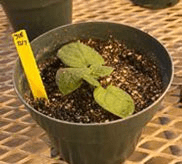
Soil Choice:
- Physalis plants prefer well-drained soils
Initial transplant:
- When the seedlings are about 2-3 inches tall they are ready to be transplanted into a bigger pot (about 4-6 inches in diameter)
Final transplant:
- Before making the move outside its is recommended that you harden off your plants. Gradually introduce them to more hours of sunlight a day before leaving them outside permanently. If transplanting into the ground outside check the first frost-free date for your area, and transplant after that occurs. If keeping in pots make sure they are at least 10-12 inches in diameter.
Trellising
- The Colombia and Toma Verde both grow tall and upright. The Colombia can reach up to six feet tall and do well with support from something sturdy like a t-stake. You can read about our field trellising we did here
- Ground Cherries have a low sprawling growth habit, you can try and contain them using stakes and twine. Feel free to experiment! Keep in mind they do drop their fruit.
Harvesting
- Toma Verde Tomatillo
- These fruits are ready for harvest when they fill out the husk and the dry husk begins to split.
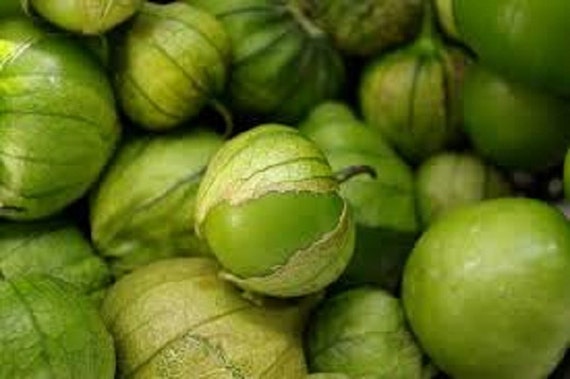
- Groundcherry (Pineapple and PHY 50)
- When the husk surrounding the fruit becomes dry and papery it will drop to the ground. Sometimes premature fruit drop will happen, so make sure the fruit are yellow-orange in color before eating. If fruit do drop early they will eventually ripen on their own.
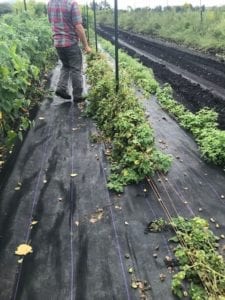
- Colombia Goldenberry
- These take the longest to ripen, which is why you should start the seeds early! The fruits stay on the plant, but have a papery-husk similar to the groundcherry when ripe. They should be orange in color.
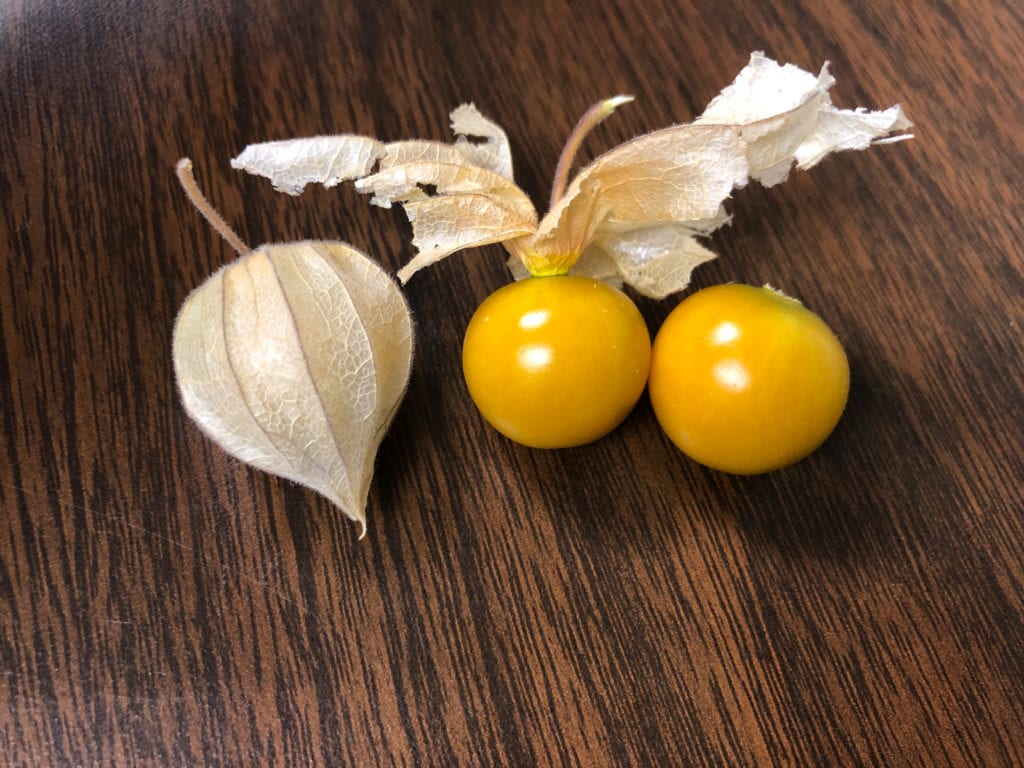
View the 2020 Physalis Information Sheet for Growers Below:
Data Collection
Dates:
To help us better understand growing season length in different climates please record the following dates for each species you grew:
1. The date you start your seeds
2. The date you transplant (into final pot or into ground)
3. The date you get your first ripe fruit
Please use this form to record your information. You can save your responses by clicking submit. You will then receive and email that will allow you to edit the form at a later date, so that you can track your data as it occurs.
Insects:
This year we are interested in Physalis-insect interactions and ask that you document the insect visitors on your Physalis plants. We are interested in observations throughout the lifespan of the plants, so it is never too soon to record an observation. You can also record insects in different life stages (i.e. eggs, larvae, and adults). We are interested in all insect visitors; pests, pollinators, and in between!
We will be using iNaturalist, an online database, to do this. This service allows us to track which insects visit the plants while also recording time and geographical information. You will upload a photo and it will record the date the observation occurred as well as the general location of it.
We will be using the iNaturalist platform to collect data for 2020 Community Science Project. You can access this platform in two ways:
- Website on desktop computer
- App available on the Apple App Store or Android Google Play Store
Step-by-Step Instructions for Using iNaturalist on a Desktop Computer
Getting Started
1. Visit the iNaturalist website and create an account by hitting the ” Sign Up ” button in the top right-hand corner and filling out the short sign-up form.
2. Once you have an account, search for the Physalis Improvement Project and click on it in the dropdown menu.

3. Once on the project page click “Join”

Now you will be all set up for when you are ready to log your first observation!
Uploading an Observation
Do you see an insect on your Physalis plants? Pest? Pollinator? Unsure? Snap a picture of it and upload it to iNaturalist. Make sure you are logged into your account (and have completed the steps above) and then complete the steps below:
1. In the top right-hand corner click the green “Upload” button

2. Select the photo file on your computer that you would like to upload. Upload the photo.
3. Click the “species name” box to get a list of suggestions of possible species. Select the one you think is most correct.
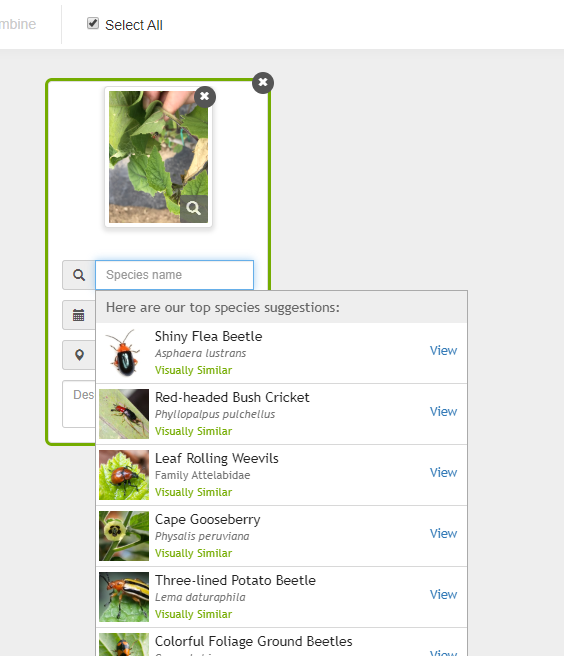
4. Fill out the ” add details” box with what species of Physalis you observed the insect on
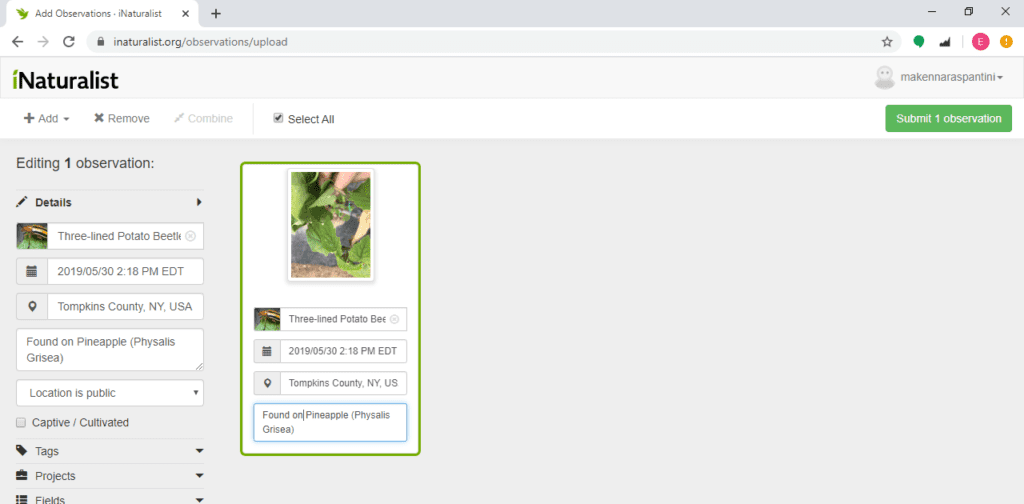
5. Click the “upload observation” button in the right hand corner


